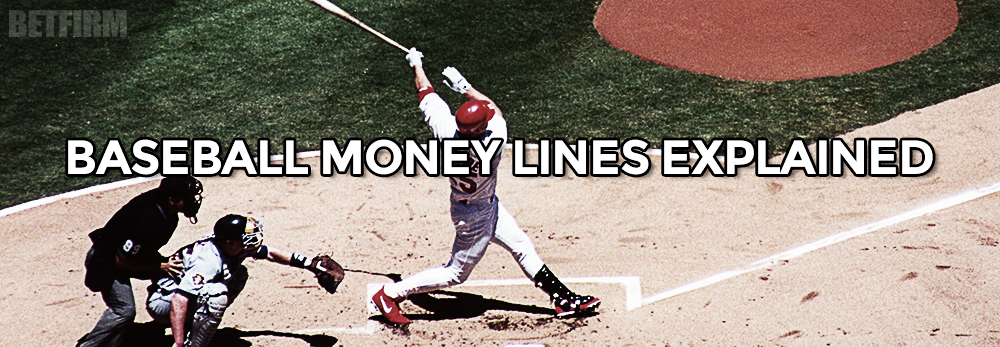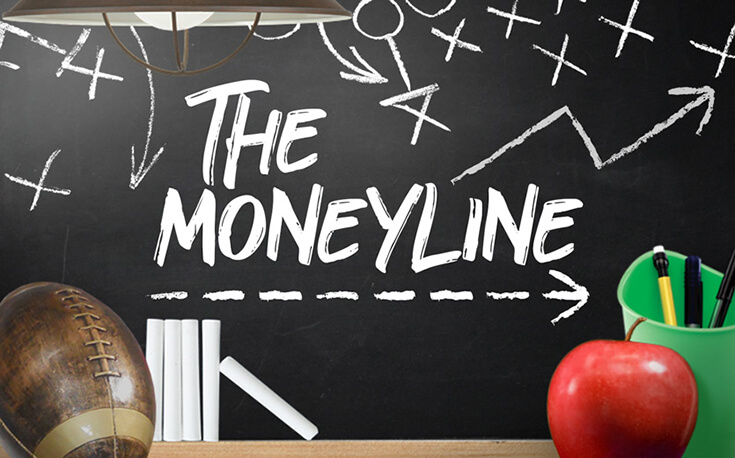Money Line betting is the most common type of sports bet. The simple format ensures it’s a popular choice for beginner bettors. However, more advanced bettors will still turn to this market to find value. What is a Money Line bet? How does Money Line betting work? Read on to find out.
- Moneyline Betting Calculator
- How To Bet On Moneyline
- What Is The Moneyline Bet
- How Does The Moneyline Work In Betting
- What Does +4000 Odds Mean
- Sports Betting Money Line Explained
- What Is Moneyline
- Money line bets can seem a little confusing at first, especially for the bettor who has traditionally wagered their money on the point spread. The money line is actually the most straightforward bet you can have on any sport. Whilst the spread bet is on a team to win and by how many, the money line is a bet on simply a team to win.
- A moneyline bet is on who will win the game, irrespective of the spread. Green Bay Packers +130 New York Giants -145 In the above example, the minus (-) sign in front of the price means that the New York Giants are the favorites in this particular game.
- A moneyline bet simply involves you picking one of two teams to win the game. No catch, no angle, just the right answer or the wrong answer. Each team/person in a matchup for a moneyline betting option is given a separate numerical value for bettors to wager on and these are called “odds.”.
Moneyline betting simply require the team you’re betting on to win outright. The odds attached to each team denote an underdog and a favorite, which determine how much you win if your bet pans out. If you’re used to betting on NFL spreads, you’ll already be familiar with the concept of moneyline odds.
What is a Money Line bet?
Money Line betting is one of the simplest and most common ways to bet. There will usually be two options presented in a market and all you have to do to place a Money Line bet is choose who you think will win and place a bet on them. The easiest way to describe what a Money Line bet is, is to think of it as a “match winner” bet.

If you place a Money Line bet and the team or person you have bet on wins, your bet will win. If the team or person you have bet on loses, your bet will lose. In order to calculate the potential return from your Money Line bet, simply multiply your stake (the amount you bet) by the decimal odds of the option you are betting on.
How does Money Line betting work?
Money Line betting is most prevalent in sports like baseball, tennis and UFC. While it is still a popular choice for betting on the NBA and NFL, the high scoring nature of sports like basketball and American football mean other bet types are more widely used (such as Totals or Handicap).
Although Money Line betting is most common in sporting events that feature two teams or competitors where the result cannot be a draw or tie, people may also refer to a Money Line market in soccer or other sports that can end in a draw.
This could either be a three-way Money Line market (which includes the draw). However, this is more commonly referred to as the 1X2 market (1 representing the home side, X the draw and 2 the away side). Alternatively, there is a more standard two-way Money Line market in soccer which will adjust the odds to remove the option of the draw and simply “push” (return your stake amount) if there is no winner.
It is important not to tie yourself to a specific market and say you will only bet the Money Line, Handicap or Over/Under. While you may specialise in a certain market, it can still be useful to analyse the complete picture of an event provided by the betting market
Unlike other markets like the Over/Under (Totals) or Handicap, Money Line bets are settled solely on the result of the match – it is not impacted by the winning margin or points scored. The odds offered will reflect who is most likely to win (the favourite) and who is likely to lose (the underdog).

Although the Money Line is different to the Handicap market, there is a clear correlation between the two. The higher the Handicap mark is on the favourite, the more likely they are to win. This means the higher the Handicap is, the shorter the Money Line odds will be on the favourite (meaning the odds on the underdog will be bigger).
Handicap betting is often a popular alternative to the Money Line when there is a large disparity between the quality of two teams or competitors taking part in a match. If you are confident enough in a team winning that you think it will be greater than a specific margin, this is a case where a Handicap bet might more sense as it will provide you with an opportunity to make more money from your bet (picking a team to win by more than a certain amount of points is harder than just predicting them to win by any margin).
What is the difference between the Money Line and 1X2 betting markets?
As previously mentioned, the difference between the Money Line and 1X2 betting markets might appear to be a relatively minor difference, but it will have a big impact on the odds you bet with and the result of your bet.

Moneyline Betting Calculator
The key difference between the two market types is the availability of the draw option. The Money Line traditionally only offers two options, Team/Player A to win and Team/Player B to win. However, the 1X2 market (most common in soccer) has both of these options, plus the draw.
Some people believe the difference is simply down to a preference of terminology, and that is why it’s important to know what you’re betting on if you’re talking about the Money Line if a draw is a potential outcome. You need to determine if it’s another way to refer to the 1X2 market (a three-way Money Line) or the traditional Money Line that doesn’t include the draw. If you’re betting on the 1X2 and think it’s a normal Money Line bet, you will be in for a surprise when your stake isn’t refunded if the result is a draw.
Money Line bet example
While the concept of a Money Line bet is simple to understand, it can still be useful to go through an example to help those new to betting. Below is an example of a Money Line market for an NFL game at Pinnacle.
These odds suggest the Kansas City Chiefs have a 79.56% chance of winning the game, whereas the Houston Texans have a 20.44% chance.If you believe the Houston Texans will win, or have a greater than 20.44% chance of winning, you may want to place a Money Line bet on them.You then simply add the selection to your bet slip and place the bet.
If the Houston Texans beat the Kansas City Chiefs, this would result in a win for your bet and a return of €47.40 (€37.40 profit and your €10 stake).If the Chiefs were to beat the Texans, the result of the bet would be a loss and it would return €0.
Money Line betting strategy: When to bet the Money Line
Once you understand how Money Line betting works, there are various methods or strategies you can use to decide what to bet on.Those who bet for fun may just choose their favourite team or the team that, based on their opinion, they think has the best chance of winning.However, those who are serious about betting will be more concerned with the concept of value and will want to bet on the team that has been underestimated by the odds provided by the bookmaker.
If your aim is to use a Money Line betting strategy to make a long-term profit, an understanding of probability is key. This is where converting odds into percentage chance can help give you a better idea of how the bookmaker (and rest of the betting market) think a game will play out.
How To Bet On Moneyline
Whether you use a complex model, a simplified power rankings system or just odds comparison from an efficient bookmaker to one that hasn’t managed their odds correctly, the concept of value always remains the same. You are looking for an option within the market that has a greater likelihood of happening than that shown by the available odds.
It is important not to tie yourself to a specific market as a bettor and say you will only bet the Money Line, Handicap or Over/Under. While you may specialise in a certain market or have access to data that will make it easier to find an edge, it can still be useful to analyse the complete picture of an event provided by the betting market to help inform the decision making process before placing a bet.
The legal sports betting world is changing. Quickly.
New states are opening their arms to the world of legal sports betting and are opening opportunities for you to take part in making legal sports bets on your favorite teams in casinos, race tracks and through online betting.
Part of our goal at SportsbookWire is to educate the new and/or casual sports bettor on the typical terms around legal sports betting and the various nuances that go into making a sports bet or wager.

In sports betting, a negative money line (represented as -200, -300, -400, etc.) represents the amount of money that you need to bet in order to win $100 if your bet is correct.
Here are some negative money line examples:
The New England Patriots are -500 against the Buffalo Bills. If you’re betting the Patriots, you would need to wager $500 in order to win $100 if your bet is correct with the Patriots winning.The New York Yankees are -200 to beat the New York Mets. If you are betting on the Yankees, you need to wager $200 to win $100 if your bet is correct with the Yankees winning.The Tampa Bay Lightning are -400 to beat the Detroit Red Wings. If you’re betting on the Lightning to win, you need to wager $400 to win $100 if your bet is correct with the Lightning winning.What Is The Moneyline Bet
It’s actually pretty easy and we’re sure you get the point here.
Fractional odds of 1/2 and decimal odds of 1.5 are also equivalent in this scenario.
A negative money line is also considered as the favorite – or chalk pick – by the oddsmakers.
We’ll get into that more in other pieces, but the heavier the team, player, situation or bet in general is favored to succeed, the higher the negative money line.
How Does The Moneyline Work In Betting
For example…
What Does +4000 Odds Mean
In the first round of the 2018-19 NBA Playoffs, the Golden State Warriors money line wasSports Betting Money Line Explained
-20000What Is Moneyline
to beat the Los Angeles Clippers. That means you would need to have wagered $20,000 to win $100 if the Clippers won.Kind of ridiculous, right? That’s how heavy the Warriors were favored over the Clippers … the sports books don’t want you making that bet, because it was expected to be an easy Warriors win.
If you’re looking for more educational information on sports betting and terms around such, be sure to check out our How to Bet on Sports 101 section for a variety of betting definitions, betting terms and sports betting strategies to help you build your bank account.
Most Popular Pages